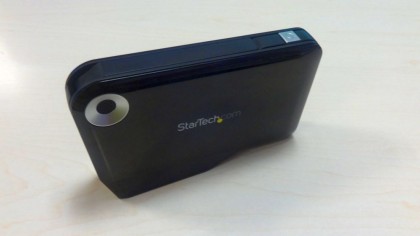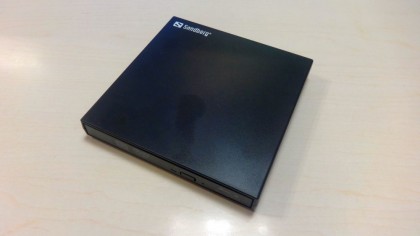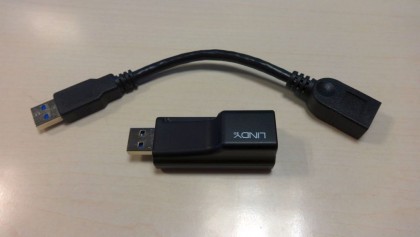10 essential accessories to supercharge your Ultrabook
Super thin laptops come with a lot of compromises
Unlike some of its competitors, the device doesn't have a card reader nor does it have an extra USB port to plug in external hard disk drives.
It supports HDDs up to 1TB in size, has an extendable antenna for enhanced connectivity and offers FTP, SMB and UPnP functionality.

4. USB Mini Blu-ray Burner
Optical disk drives were the first component to be dropped as Intel put together the specifications for Ultrabook devices (although Acer did try to bring them back in an unconventional Ultrabook design).
If you want to read or write to an external blank media (or boot for one), then you will need an external model like Sandberg's USB Mini Blu-ray burner, available from Amazon for just over £75 ($130).
There are cheaper models around especially if you don't mind dropping writing capabilities. This one though comes with a longer-than-average warranty.
As expected, it has a USB 2.0 rather than USB 3.0 interface and is a native plug-and-play device (no drivers required). It can write to double-layer discs and draws power from the computer's own USB ports.
Are you a pro? Subscribe to our newsletter
Sign up to the TechRadar Pro newsletter to get all the top news, opinion, features and guidance your business needs to succeed!
The device worked flawlessly and didn't produce any coasters when I tried to fill up a few blank DVDs. Read and write speeds were decent enough, but nothing to write home about.
Ultimately, optical disk drives are bound to become a thing of the past as technology moves on, fast internet connectivity becomes ubiquitous and computer magazines drop cover discs.

5. USB 3.0 Gigabit Ethernet Converter
You will be hard-pressed to find an Ethernet/RJ-45 port in the new Ultrabooks. The drive to produce something thinner and lighter than the previous generation means that these chunkier ports are the first to be shunned.
However, for those yearning for one (and provided they have a free USB port), a USB-to-Ethernet converter, preferably a USB 3.0 to Gigabit model, should be part of their essential accessories kit, especially if, like us, you attend events where Wi-Fi can be patchy.
Lindy's model (available for £35 [$60]) is a bog standard one that comes with a two-year warranty and even a useful extension cable that can be used for other devices.
The device is plug-and-play (a leaflet suggests that you install the appropriate drivers from the accompanying CD first) and on my Windows 8.1 Ultrabook was automatically detected with the right drivers downloaded.
I didn't have any issues speed-wise. We recorded ping times of 9ms, download speeds of 97Mbps and upload speeds of 66Mbps respectively on Speedtest.
Bear in mind though that using USB means there will be some compute overhead (i.e. the adaptor will use some of your CPU resources), however it is likely to be minimal.

6. USB hub with smartphone sync
It is not easy to innovate when it comes to bog standard USB peripherals that often retail for less than £1 at your local store.
However, Sandberg did that with a USB hub that has only three ports (rather than the usual four) but also offers a micro USB plug as well that can connect to a smartphone.
The actual connectors are at the end of cables which means that they can be more freely moved around compared to traditional solutions.
While it sounds like a rather interesting idea, in practice one would probably wish for a better thought product.
It is not USB 3.0 compatible, has four cables protruding from one USB hub (which may make it flimsier than traditional four-port hubs) and it doesn't provide with enough power to charge even a standard smartphone (I tried the Motorola Moto G).
That said, it does cost a mere £10 ($18), is plug-and-play, has a built-in overload protection and a five-year warranty. Note that this product is also available with a 30pin iPhone connector.

Désiré has been musing and writing about technology during a career spanning four decades. He dabbled in website builders and web hosting when DHTML and frames were in vogue and started narrating about the impact of technology on society just before the start of the Y2K hysteria at the turn of the last millennium.